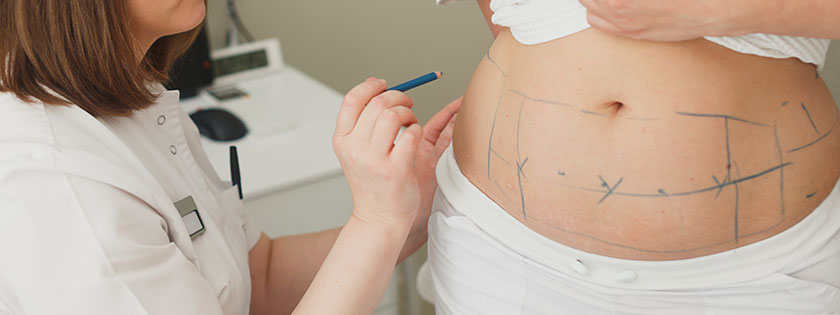Liposuction is one of the most popular cosmetic procedures in Dubai, known for its effectiveness in contouring the body by removing excess fat tissue. This surgical technique can help individuals achieve their desired body shape by targeting stubborn fat deposits that do not respond to diet and exercise. In this article, we will explore the various Liposuction in Dubai, emphasizing how each method focuses on fat tissue removal, the advantages and disadvantages, and what patients can expect during the procedure.
Understanding Liposuction
Liposuction, often referred to as lipoplasty, is a surgical procedure that aims to remove unwanted fat from specific areas of the body. It is commonly performed on the abdomen, thighs, buttocks, arms, neck, and chin. The goal of liposuction is not to serve as a weight-loss solution but rather to sculpt and contour the body, creating a more aesthetically pleasing silhouette.
Common Liposuction Techniques
Liposuction techniques have evolved significantly over the years, allowing for more precise fat removal and better overall results. The following are some of the most common liposuction techniques used in Dubai:
Tumescent Liposuction
Tumescent liposuction is one of the most widely used techniques today. It involves the injection of a tumescent solution—a mixture of saline, lidocaine (a local anesthetic), and epinephrine (to minimize bleeding)—into the treatment area. This solution causes the fat tissue to swell, making it easier to suction out. The key benefits of this technique include:
- Reduced Pain and Discomfort: The local anesthetic helps minimize pain during and after the procedure.
- Less Blood Loss: The epinephrine in the solution constricts blood vessels, leading to reduced bleeding and swelling.
- Shorter Recovery Time: Patients often experience faster recovery with this method.
Ultrasound-Assisted Liposuction (UAL)
Ultrasound-assisted liposuction utilizes high-frequency sound waves to break down fat cells before they are suctioned out. This technique is particularly effective for removing larger volumes of fat and is often used in areas with denser fat deposits, such as the back and abdomen. Advantages of UAL include:
- Effective Fat Dissolution: The ultrasound waves liquefy the fat, making it easier to remove.
- Precision: This technique allows for more precise targeting of fat deposits, resulting in smoother contours.
- Less Trauma: UAL tends to cause less damage to surrounding tissues compared to traditional liposuction methods.
Power-Assisted Liposuction (PAL)
Power-assisted liposuction employs a specialized vibrating cannula that helps break up fat tissue, making it easier to remove. This technique enhances the surgeon's efficiency and reduces the amount of physical effort required during the procedure. Key benefits of PAL include:
- Efficiency: The vibrating cannula allows for quicker fat removal, which can lead to shorter surgery times.
- Reduced Trauma: PAL typically causes less trauma to surrounding tissues, resulting in less bruising and swelling.
- Versatility: This technique can be used in various body areas and is suitable for patients with different body types.
Laser-Assisted Liposuction (LAL)
Laser-assisted liposuction utilizes laser technology to liquefy fat cells, which are then suctioned out. The laser energy also stimulates collagen production, promoting skin tightening in the treated areas. The advantages of LAL include:
- Skin Tightening: The heat from the laser helps tighten the skin, resulting in smoother contours.
- Minimal Downtime: Many patients experience quicker recovery times with this method.
- Less Pain and Swelling: The laser can minimize trauma to surrounding tissues, leading to less pain and swelling post-procedure.
SmartLipo
SmartLipo is a specific brand of laser-assisted liposuction that combines traditional liposuction with laser technology. It is designed for smaller areas and is minimally invasive. The benefits of SmartLipo include:
- Less Invasive: This technique requires smaller incisions, leading to reduced scarring.
- Quicker Recovery: Many patients return to their daily activities within a few days.
- Improved Skin Appearance: The laser energy not only removes fat but also helps improve skin elasticity.
What to Expect During the Procedure
The liposuction process generally follows these steps:
- Consultation: An initial consultation with a qualified plastic surgeon is crucial. During this visit, the surgeon will assess the patient’s goals, medical history, and areas of concern to determine the most appropriate technique.
- Anesthesia: Depending on the chosen technique and the extent of fat removal, local anesthesia or general anesthesia may be used.
- Incisions: Small incisions are made in discreet locations to minimize scarring.
- Fat Removal: The chosen technique is employed to remove the targeted fat tissue.
- Recovery: Post-operative care instructions are provided, including wearing compression garments to aid healing.
Considerations Before Liposuction
Before undergoing liposuction, individuals should consider the following:
- Realistic Expectations: Understand that liposuction is not a weight-loss procedure but a body contouring method.
- Consult a Qualified Surgeon: Ensure that the surgeon is board-certified and experienced in the specific liposuction technique chosen.
- Post-Operative Care: Following the surgeon’s instructions for post-operative care is crucial for achieving the best results.
Conclusion
Liposuction is a versatile and effective procedure for removing unwanted fat tissue in Dubai, with various techniques available to meet individual needs. Each method—whether tumescent, ultrasound-assisted, power-assisted, laser-assisted, or SmartLipo—focuses on enhancing fat tissue removal while minimizing discomfort and recovery time. By understanding the different techniques and their benefits, potential patients can make informed decisions about their body contouring journey. If you’re considering liposuction, consult with a qualified plastic surgeon to discuss your options and embark on the path to achieving your desired body shape.





Comments